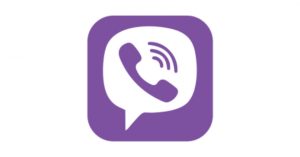Skype is a telecommunications application that specializes in providing video chat and voice calls between computers, tablets, mobile devices and smartwatches via the Internet. Skype also provides instant messaging services. Users may transmit text, video, audio and images – Wikipedia.
I was unable to connect with a peer for this activity. However, since I have numerous experiences connecting through video conferencing to facilitate communication with work colleagues, family and friends, I will use those experiences to share my thoughts. Over the years I have used a lot of video conferencing to share ideas with colleagues and most recently to keep in touch with my family and friends since I migrated. My main video tools are Skype, Facebook Messenger, Tango, Whatsapp and Viber.





Video conferencing tools are a great way to facilitate communication and collaboration between students and teachers. It promotes:
- Socialization – provides opportunities for students to socially interact with people outside of the classroom.
- Anytime Access – in real time. It connects people and objects that are not in the same physical environment.
- Less travel – allows guest speakers to stay at their office to give their presentation to a number of students/audience within a given day.
- Communication – through images, text, audio and video. Providing better clarity of ideas being conveyed.
Skype is easy to set up and navigate. However, there are a few things to take into consideration when using Skype or any other video conferencing tool; especially within our classrooms. Some of these are but are not limited to:
- We need to have consent from parents to allow the use of Skype in our classrooms, since it is an online communication system.
- Skype in the classroom is not like regular Skype, which means that there are some limitations to what projects you can do during class time.
- Resolution – the webcam has to be at least 2 – 3 megapixels for the effectiveness of picture resolution.
- Speed of Internet Connection – having your WiFi cutting in and out can be a disaster and takes away from your presentation. Images will be scrambled and audio will delay if the internet speed is slow.
Skype is synonymous with “video chatting” and allows users to make video and regular calls (Purwal, S.J. 2011). One great feature of Skype is that it allows you to tweak your webcam settings for better quality pictures. The option to turn off the video camera during a presentation, especially if it outside of the work hours is also a great benefit if you are not the presenter. This allows you to multi-task in the comfort of your home.
Reference
Purwal, S. J. (2011, August 9). Luditte’s guide to online video conferencing.
Retrieved from https://www.itbusiness.ca/news/luddites-guide-to-onlinevideo-conferencing/16347.
https://sites.google.com/a/my.maryvillecollege.edu/anna-owens-educational-technology/home/project-1/skype-in-the-classroom.
https://en.wikipedia.org/wiki/Skype


Leave a Reply